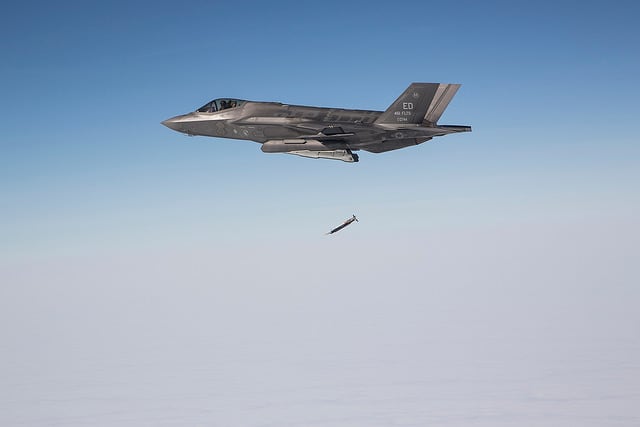RAAF BASE WILLIAMTOWN, Australia – The first two Lockheed Martin F-35A Lightning II fighters to be permanently based in Australia arrived at RAAF Base Williamtown, north of Sydney, on December 10.
The aircraft are the ninth and tenth jets to be delivered to the Royal Australian Air Force (RAAF) and the first eight are temporarily flying with the U.S. Air Force’s 61st Fighter Squadron at Luke Air Force Base Arizona, as part of the international F-35 training school. The RAAF has 72 F-35As on order and it will decide whether to acquire a further 28 aircraft in the next decade.
RELATED

The two aircraft had been delivered to the RAAF at Luke in September and October and delivered to Williamtown via Hickam Air Force Base in Hawaii and RAAF Base Amberley, south-east of Brisbane.
The pair were flown on the final leg of the journey by the commanding officer of No. 3 Squadron, Wing Commander Darren Clare and Squadron Leader Red Borrman. No. 3 Squadron is the first Australian F-35 squadron.

A formal welcoming ceremony at Williamtown, which will be home to the majority of Australian F-35As, was attended by dignitaries including Australia Minister for Defence Christopher Pyne, Minister for Defence Industry Steve Ciobo, Lockheed Martin CEO Marillyn Hewson and Chief of the Royal Australian Air Force, Air Marshal ‘Leo’ Davies.
“Today marks a very important day for the Australian Defence Force and particularly the Royal Australian Air Force,” Davies said.
“Welcome to the latest chapter of the F-35 story, the most significant Royal Australian Air Force acquisition in our 97-year history," he continued. "The two aircraft that landed here today mark the latest step in an exciting journey for Air Force, which has been over 16 years in the making.”
Davies also quoted his predecessor in the top role, Air Marshal Geoff Brown, when he said, “The Joint Strike Fighter replaces nothing, but changes everything; it requires a new way of thinking and a new way of operating.”
In the Australian context the F-35A is replacing the 71 surviving McDonnel Douglas (now Boeing) F/A-18A/B ‘Classic’ Hornets, which entered service in 1985. Australia became a Tier 3 partner in the international Joint Strike Fighter program in 2002.
“The F-35 is not just a 5th generation fighter, with speed and agility and advanced information systems, it is a catalyst for transforming us into a 5th generation fighting force,”Davies added. “An integrated Australian Defence Force is greater than the sum of its parts and the F-35 has been a driver for this change. So today ladies and gentlemen, the naysayers can take a seat.”
The two aircraft will now conduct a period of verification and validation testing to ensure they are compatible with local ICT systems and infrastructure – including Australia’s sovereign version of the F-35’s Autonomic Logistics Information System (ALIS). Together with further deliveries of aircraft, this work will conclude with the initial operational capability (IOC) milestone, scheduled at the end of 2020.
Two more aircraft will be delivered to Williamtown in April 2019 and eight aircraft will have been delivered by the end of the year. The Hornet is due to be retired by the end of 2023.
Defence Minister Pyne described the F-35 program as the largest air force acquisition project in Australia’s history. “The government is investing over $17 billion [U.S. $12.27] to acquire at least 72 Joint Strike Fighters,” he said.
“The Joint Strike Fighter is the largest acquisition in the history of the Royal Australian Air Force and is a key part of the Government’s $200 billion build up in Defence capability.”
Nigel Pittaway is the Australia correspondent for Defense News.








